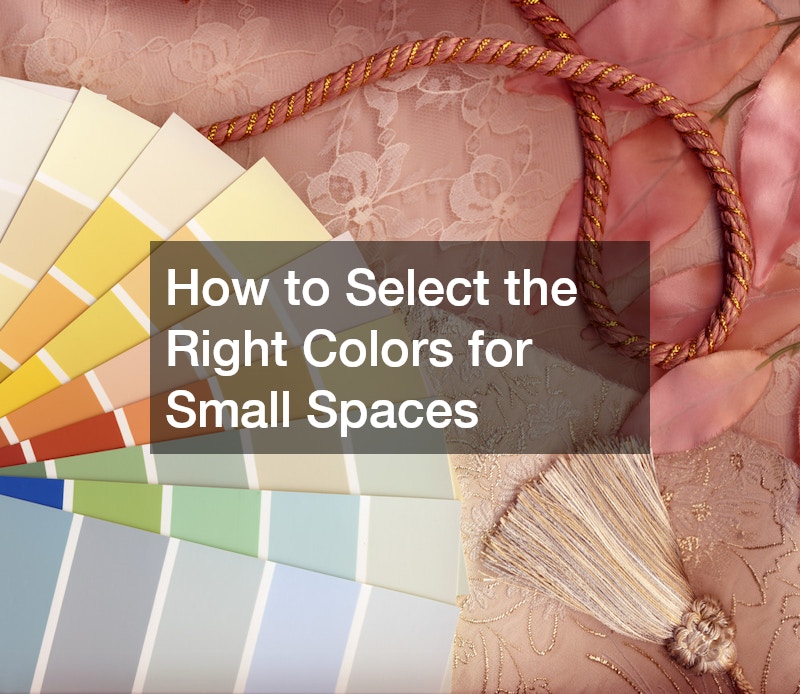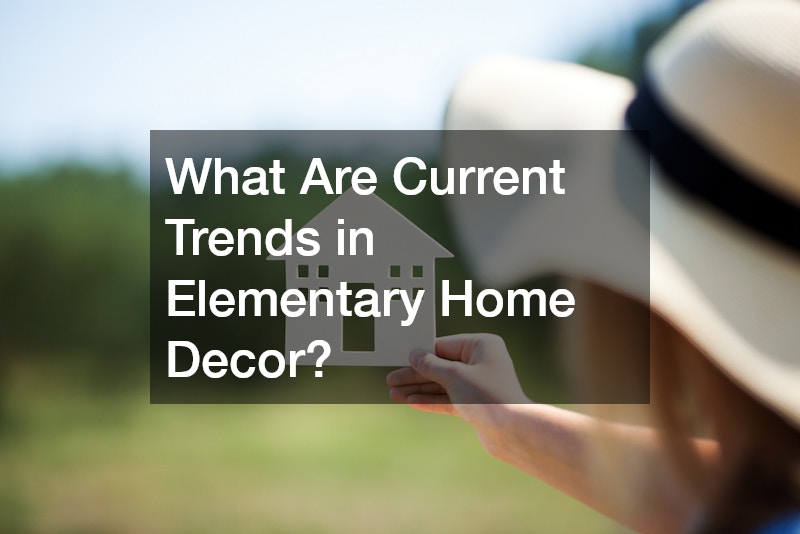Decorating your home is not just about aesthetics—it’s a creative and personal process that can completely transform the way you live and feel in your space. Whether you’re renovating a single room or making small adjustments throughout your home, applying elementary home decor principles can breathe new life into your environment. With a thoughtful approach, even the most modest changes can lead to dramatic results. This guide offers practical, budget-friendly strategies to help you enhance your home’s look and functionality, while reflecting your unique style.
What Are the Basics of Elementary Home Decor?
Every successful decor plan begins with a deep understanding of the purpose and layout of each room. Before selecting furniture, colors, or accessories, take the time to evaluate how each space is used on a daily basis. Is it a high-traffic area where durability is key, like a living room or entryway? Or is it a private retreat, such as a bedroom, where comfort and tranquility take priority? Identifying the primary function of a space helps guide decisions that are not only visually appealing but also practical and supportive of your lifestyle.
Choosing a cohesive color palette is one of the most impactful changes you can make. Soft neutrals create calm, darker tones add drama, and warm hues offer coziness. Use color to tie spaces together and set the right mood for each room. Furniture is the backbone of your home decor. Focus on quality over quantity—choose versatile, well-made pieces that serve a purpose and elevate your space visually. From timeless sofas to sleek storage units, furniture should be both functional and visually aligned with your overall theme. Whether you’re working around recently completed home addition services or planning one in the near future, maintaining design cohesion across old and new spaces is key.
How Can Lighting Transform Your Home?

Lighting can truly make or break the atmosphere during home renovations. It’s one of the most powerful yet often overlooked elements of interior design. The right lighting not only enhances the visual appeal of a room but also affects how you feel and function within it. A well-lit space can feel airy, open, and inviting, while poor lighting can make even the most stylish room appear dull and uninviting.
Layered lighting is another powerful tool. Combine overhead lighting (ambient), focused lighting (task), and decorative lighting (accent) to create different moods and adapt to various activities throughout the day. Accent lighting—like wall sconces, under-cabinet LEDs, or dimmable lamps—can add warmth and highlight architectural features or artwork. If your lighting needs to be updated during an AC maintenance check or electrical upgrade, it’s a perfect opportunity to explore more energy-efficient options. The right lighting setup doesn’t just brighten a room; it adds depth, comfort, and character.
What Is the Role of Textures in Home Decor?
Texture adds a unique richness and tactile interest to a space, elevating your decor from flat and simple to warm and engaging. While color and shape catch the eye, texture is what invites you to interact with your environment—it’s what makes a room feel lived-in, balanced, and complete. Incorporating a variety of textures can subtly transform the mood of a room, adding both visual complexity and sensory appeal.
Fabrics and textiles—such as plush rugs, velvet cushions, or woven throws—can instantly soften a room and make it more inviting. Use these elements to bring warmth and personality to otherwise neutral or structured spaces. Try layering different textures throughout a room. A soft rug beneath a wooden coffee table, paired with linen curtains and a metallic lamp, creates a sophisticated and harmonious balance that’s visually engaging.
Texture also plays a key role in defining the style of a room. Woven baskets and linen curtains lend a relaxed, natural vibe, while polished marble and brushed brass can create a more refined, modern atmosphere. Don’t overlook structural elements like iron railings, exposed brick, or reclaimed wood beams—these can become integral style features that also serve a functional purpose. By strategically combining rough and smooth, matte and shiny, hard and soft materials, you can strike a balance that feels cohesive and inviting.
How to Select the Right Colors for Small Spaces

Color plays a crucial role in how we perceive and experience a space. It has the ability to influence not just the mood of a room, but also how large or small that room feels. In particular, color can dramatically affect the perception of space, especially in smaller rooms where every inch counts. Lighter shades, such as whites, soft grays, pastels, and light neutrals, have the unique ability to make a room feel larger, brighter, and more open. These hues reflect natural and artificial light, helping to amplify the available light and create the illusion of space.
Strategic contrast also matters—dark accents or statement walls can add dimension without overwhelming the room. Just be sure to balance bold colors with lighter tones to keep the space from feeling closed in. Maintain a cohesive color flow throughout your home to create harmony between rooms. Whether through accent pieces, wall colors, or textiles, using a consistent color scheme ties your decor together seamlessly. If you’re planning for a house appraisal, a cohesive and appealing color palette can also increase your home’s perceived value.
What Are Some Cost-Effective Decor Ideas?
You don’t have to spend a fortune to refresh and personalize your space. In fact, some of the most unique and meaningful home decor changes come from doing it yourself. DIY projects are an excellent way to infuse your personality into your home while keeping costs low. With a bit of creativity, you can transform your space without breaking the bank.
Thrift stores and flea markets can offer unexpected treasures. Look for vintage mirrors, unique vases, or chairs with good bones that can be easily refinished. These one-of-a-kind finds can add charm and personality to any room. Embracing a minimalist approach can also be both stylish and economical. Focus on key pieces that bring value and beauty into your home, rather than cluttering your space with unnecessary decor.
You can also consider enhancing outdoor areas. Updating a fence or entryway with the help of a trusted fence company can boost curb appeal with minimal interior changes. Or, for more flexible hosting, explore options like restroom trailer rental for backyard events that extend your living space outward while remaining cost-effective.
How to Integrate Technology into Home Decor
Modern home decor increasingly incorporates thoughtful integration of technology to enhance convenience, efficiency, and ambiance. One of the most popular examples of this trend is the rise of smart lighting systems, which bring both functionality and flexibility to your living space. With smart lighting, you can control the mood and atmosphere of a room with just a few taps on your smartphone or a simple voice command.
Gone are the days of flipping a switch and relying on manual dimmers. Smart lighting systems allow you to schedule lights to turn on or off at specific times, which can be particularly useful for enhancing security when you’re away or for managing energy usage. Want to wake up to a gentle, warm glow in the morning? You can set your lights to gradually brighten, simulating a natural sunrise to ease you into the day. Conversely, for a cozy, relaxing evening, you can dim the lights and set them to a calming, soft hue to create a peaceful environment without lifting a finger.
Technology can also improve entertainment setups. Consider mounting TVs with concealed wiring or integrating sound systems that blend into your decor. These subtle additions enhance functionality while keeping aesthetics intact. And if you’re building a new space or considering metal buildings as an extension, smart systems can be designed right into the framework for a clean, seamless finish. Drones, too, are increasingly being used to visualize design ideas or document exterior upgrades, offering a new way to interact with your property and plan ahead.
How Can Art Influence Your Home Environment?

Art is one of the most personal and impactful elements in home decor. It’s not just an accessory or decoration—it’s a powerful expression of your individual style, tastes, and emotions. Whether it’s a striking painting, a thought-provoking sculpture, or a beautifully crafted textile piece, art has the ability to transform a space, giving it character, depth, and personality.
Art serves as a reflection of who you are and what inspires you, making it one of the most authentic ways to imbue your home with meaning. The pieces you choose tell stories, evoke memories, and even set the tone for your entire room. A bold abstract painting can inject energy and vibrancy into a living room, while a serene landscape might bring a sense of tranquility to a bedroom. Sculptures and three-dimensional art pieces can add texture and intrigue, creating focal points that captivate and invite conversation.
Display art creatively—don’t feel limited to framed pieces on walls. Lean artwork on shelves, layer it against furniture, or hang it with unconventional methods to create a curated, lived-in feel. Sculptures, ceramics, or mixed-media pieces can introduce texture and dimension. Use a mix of small and large works to maintain visual balance and keep the eye engaged as it moves through the space. If you’re prepping your space to list, an appraiser or roof contractors might note well-curated art and finishes as part of a polished, move-in-ready presentation.
What Are Some Effective Storage Solutions for Small Homes?
When square footage is limited, storage must be approached with strategy and creativity. In smaller homes or apartments, every inch counts, and it’s essential to find ways to keep your space functional while maintaining a sense of openness. Multi-functional furniture is a game-changer in this regard, as it allows you to make the most out of your available space without sacrificing comfort or style.
For example, beds with built-in drawers offer an excellent solution for storing extra linens, clothing, or even shoes, keeping clutter at bay while maintaining a sleek and streamlined look. This not only eliminates the need for bulky dressers or storage bins but also frees up valuable floor space. Similarly, ottomans with hidden compartments serve as both seating and storage, offering a discreet place to stash blankets, remote controls, or toys in a living room or bedroom.
Be sure to inspect common clutter zones—bathrooms, kitchens, laundry areas—and improve flow with stackable bins, hanging systems, or even drain cleaning to ensure functionality isn’t compromised by overlooked maintenance. If you’re in a temporary setup—such as during renovations, legal consultation with a bankruptcy firm, or a business relocation involving freight services—portable storage options can keep things organized during transition.
How to Customize Decor for Rental Apartments
Renting doesn’t mean you have to compromise on style or personality—there are plenty of ways to make your space feel like home without risking your deposit. Temporary decor elements are a fantastic option for renters who want to transform their living environment without making permanent changes. These versatile solutions let you update and refresh your space, all while ensuring that you can easily return everything to its original state when it’s time to move out.
One of the easiest and most impactful ways to update a room is with peel-and-stick wallpaper. Unlike traditional wallpaper, which requires adhesive and professional installation, peel-and-stick options are simple to apply and remove, leaving no residue behind. You can use it to create accent walls, add texture to a bathroom, or even line the inside of shelves or cabinets. With a wide range of patterns, colors, and designs—from bold geometric prints to subtle textures—you can personalize your space in just a few hours, making it feel uniquely yours without making any permanent alterations.
Removable decals and artwork can instantly add style and personality to blank walls. Choose designs that reflect your taste and can be taken down or swapped out easily when it’s time to move. Accessories are your best friend in a rental. Use decorative lighting, throw pillows, tabletop decor, and linens to bring in color and texture that can move with you and evolve with your style.
What Are Current Trends in Elementary Home Decor?

Sustainability is at the forefront of modern home decor. Choose recycled materials, energy-efficient lighting, and eco-conscious brands to create a home that’s both beautiful and mindful.
Vintage and retro design is making a major comeback. Mid-century furniture, nostalgic color palettes, and retro-inspired accessories can add character and a sense of history to your space. Indoor plants continue to rise in popularity, not just for their aesthetic appeal, but for their mood-boosting and air-purifying benefits. Incorporate greenery into every room to bring the outdoors in and create a calming atmosphere.
Conclusion
Elementary home decor is about thoughtful, accessible changes that elevate your space without overwhelming your budget or your schedule. By understanding the core principles of design—such as space planning, color selection, texture, and lighting—you can shape a home that is not only functional and stylish, but also uniquely yours.
With smart strategies, a bit of creativity, and an eye on current trends, even the smallest decor updates can make a big impact. Whether you’re revamping a cozy apartment or refreshing a family home, the tips in this guide can help you turn your vision into a reality—one room at a time.
